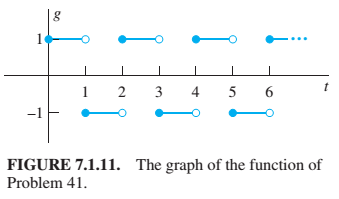
Given constants a and b. define h(t) for
Sketch the graph of Ii and apply one of the preceding problems to show that

Want to see the full answer?
Check out a sample textbook solution
Chapter 7 Solutions
Pearson eText for Differential Equations: Computing and Modeling Tech Update -- Instant Access (Pearson+)
Additional Engineering Textbook Solutions
Degarmo's Materials And Processes In Manufacturing
Starting Out with C++ from Control Structures to Objects (9th Edition)
SURVEY OF OPERATING SYSTEMS
Database Concepts (8th Edition)
Starting Out with Java: From Control Structures through Data Structures (4th Edition) (What's New in Computer Science)
Starting Out with Python (4th Edition)
- Algebra & Trigonometry with Analytic GeometryAlgebraISBN:9781133382119Author:SwokowskiPublisher:Cengage
